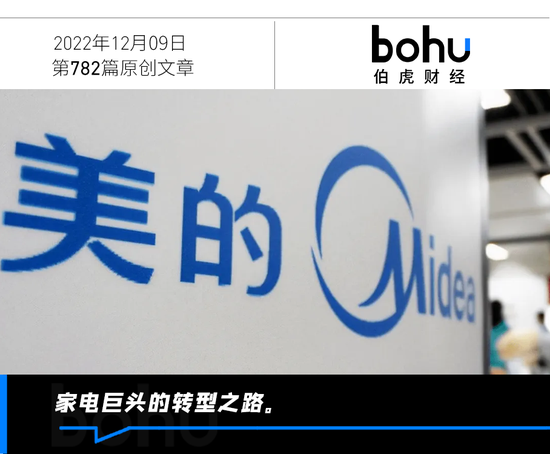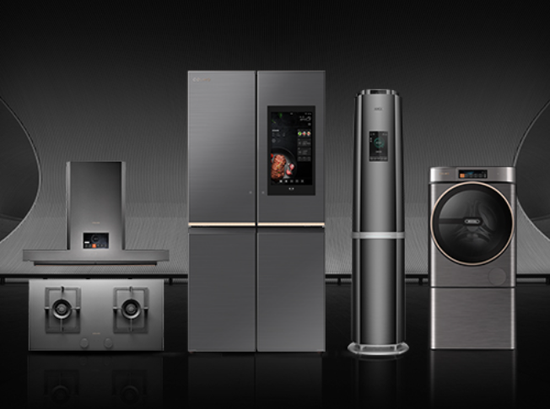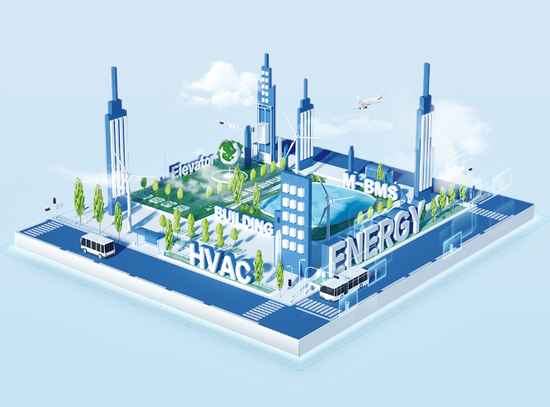
Welcome to the WeChat subscription account of “Sina Technology”: techsina
Text/Lingling
Source/Bohu Finance (ID: bohuFN)
This year’s Double Eleven, Midea’s total sales have remained the first in the entire network for ten consecutive years.
Zooming in again, Midea’s financial report for the third quarter shows that in the first three quarters of 2022, Midea’s revenue will be 271.78 billion yuan, a year-on-year increase of 3.4%, and the net profit attributable to the parent company will be 24.47 billion yuan, a year-on-year increase of 4.3%, which is more consistent with market expectations.
This result is not “amazing”, but in the context of the overall downturn of the industry, it is considered a qualified answer sheet.
With the industry going down, how can home appliance giants remain “steady”?
Bohu Finance tries to further understand the breakthrough status of home appliance companies by analyzing the transformation path of Midea, a leading home appliance company.
The home appliance industry is “crossing the catastrophe”
“The home appliance sector is showing a downward trend” has become the description of the development of this industry in 2021 by brokerage analysts. According to Fang Hongbo, CEO of Midea, “the industry will face relatively great difficulties in the next three years, which is an unprecedented winter.” This also means that the label of “downward” will also accompany the development of the home appliance industry in the next few years.
According to GfK Zhongyikang data, from January to September 2022, the scale of China’s home appliance market was 583.3 billion yuan, a year-on-year decrease of 7.0%.
Changes in the industry did not come suddenly. In fact, after a series of home appliance popularization activities such as “home appliances going to the countryside” and “trading old for new” last round, home appliances in the rural market have basically reached the renewal period, and the urban consumer market has reached the stock market stage.
In the past two years, many factors have accelerated the sense of urgency in the home appliance industry. The rise of raw materials has brought greater cost pressure to home appliance companies. Affected by the foreign epidemic, the supply of raw materials such as copper, black material, white material, and aluminum is severely insufficient in the market, and transportation costs continue to rise.
In the second half of last year, the downturn in the real estate industry also affected the home appliance industry. A major source of orders for the home appliance industry lies in real estate-related companies. Previously, Fang Hongbo also mentioned, “The purchase of home appliances is related to real estate, and the impact of real estate on home appliances generally lags by 8 months to 12 months.”
Affected by repeated epidemics, the enthusiasm for consumption in the market has also cooled in the past two years. Except for refrigerators, which have risen due to the impact of the epidemic, and some emerging categories such as clothes dryers and floor washing machines, which have maintained relatively high growth rates, most rigid-demand home appliance categories have shown a market decline.
At the same time, changes in consumer demand trends and the emergence of new channels such as live broadcast delivery of goods are all raising the requirements for home appliance companies and forcing home appliance companies to transform.
It is worth noting that some positive trends are emerging.
In terms of cost, since the second quarter, the price of upstream raw materials has begun to fall, and the gross profit margin of the industry has improved. Some companies have obviously recovered their gross profit margins. On the whole, the profit side of the home appliance industry grew better than the revenue side in the third quarter.
In addition, the momentum of the real estate industry is also improving. Since August, the cumulative year-on-year decline in the completed real estate area has narrowed. In this regard, the Donghai Securities Research Report pointed out that although there is usually a lag of more than six months from the completion of the construction to the demand for home appliance decoration, the gradual advancement of the measures to guarantee the delivery of buildings is conducive to the restoration of the valuation of kitchen appliances and other sectors.
From the perspective of specific operations, during the period of “turmoil” in the industry, the leaders of home appliances still maintained a stable state. Take Midea as an example. Affected by the epidemic in 2020, most home appliance companies have been hit to varying degrees, but Midea achieved a year-on-year increase of 12.44% in net profit.
Through Midea’s past development and current strategy, we have seen the inevitable choice for the home appliance industry to seek transformation.

(Picture source beauty’s official website)
Ask for market share from the B side
As the home appliance market becomes increasingly saturated, the growth of the C-end has begun to stabilize. Taking Midea as an example in the first three quarters of this year, the C-end business accounted for 77%, but only increased by 1.7%. It shows that Midea’s C-end business has entered the stage of stock competition, and it is relatively difficult to seek high-speed development.
In this context, the B-side has become a breakthrough for Midea.
As early as December 2020, when the five major business segments were adjusted, Midea established a new strategy of focusing on both B and C.
This year, Fang Hongbo emphasized the group’s high-level decision-making through a speech to all employees: insist on using the B-end business as the second engine to create a new situation.
At present, the layout of Midea’s 2B business can be referred to simply as the “Four Big Four and Four Smalls”. The “Big Four” are robot automation, building technology, energy management, and smart travel. , Meizhi Optoelectronics.
Judging from the data results, Midea’s B-end business has grown at a considerable rate. From January to September 2022, the revenue will be 62.5 billion, a year-on-year increase of 16.30%.
Cooperation and mergers and acquisitions are a major mode of Midea’s B-end business development. Taking the layout of the robot industry as an example, Midea acquired the robot company KUKA.
This is quite different from Gree. Gree does not have much action in terms of mergers and acquisitions. It tends to conduct independent research and development around the two directions of robots and precision machine tools, trying to expand from the home appliance manufacturing industry to the new energy industry and equipment manufacturing industry.
Therefore, there is also a view in the industry that Midea and Gree, the two traditional home appliance giants, no longer compete on the same dimension. Gree is still a huge aircraft carrier that takes time to turn around, and Midea has transformed into a more flexible and faster destroyer.
It is not difficult to find that Midea should be more “fast, precise and ruthless” in terms of developing the B-side.
Take Midea’s Building Technology Division as an example. It was formerly Midea’s central air-conditioning division, which mainly provides central air-conditioning. After discovering new market demand, that is, the new demand continuously generated by the huge building market – building system services, Midea’s central air-conditioning division quickly upgraded to “Midea Building Technology”.
 (Photo Source Beauty’s official website)
(Photo Source Beauty’s official website)However, the transformation process has not always been smooth.
Midea’s B-end development is essentially an inevitable part of Midea’s digital path.
The difficulties faced by digitalization will also be specific challenges for the development of the B-end.
Fang Hongbo once mentioned, “Digital transformation affects the whole body. It is not a certain person, nor an IT department, nor a certain business unit, but every department, every business unit, and everyone in Midea Group. To participate”, so “the challenge is very difficult”.
“Sometimes in this process, it is just a breath. If you break through and withstand it in one breath, it may be a new world. Sometimes you don’t hold back and return to the starting point.”
In his view, “Digitalization is invisible and invisible. Judging by experience, sometimes you don’t even know where this direction is. This is the biggest difficulty at present.”
As the digital transformation of enterprises enters the “no man’s land”, there is uncertainty about whether the investment can bring value, and it is even unknown whether it can avoid the “pilot trap”. This is the difficulty of digital transformation and also the problem of Midea’s business development .
It is worth mentioning that Midea’s deep cultivation in digitization in the past is enough to lay a certain foundation for the B-side.
digital exploration
Before Midea Group went public in 2012, Midea was highly decentralized and discrete, and the data systems between business systems were extremely isolated. After listing, Midea has been unified from a relatively scattered secondary industry group into one group, and it is also facing a new challenge – how to operate in a unified manner like a group.
As Fang Hongbo said, “The times are changing faster and faster, and Midea needs a high degree of rapid response, agility, tenacity, and flexibility.”
Against this background, Midea proposed the strategy of “One Midea, One System, One Standard”. Based on this, Midea unified processes, IT systems, and data standards. This is regarded by Midea as the basis for digital transformation, which took about three years.
After that, in 2015, Midea began to introduce the “Internet +” model and set the “Double Intelligence” strategy, that is, “smart products, smart manufacturing.” After 2016, due to changes in the business model, the model of layer-by-layer distribution and sales based on production has changed to production based on sales. In order to support business transformation, Midea proposed the digitalization 2.0 stage to carry out digital upgrading and transformation of its manufacturing and supply chain.
Based on this, Midea has changed the traditional production and sales model in which the main factory collects the orders of provincial distributors to organize production, and then from the OEM to the provincial agent, and then to the retailer to layer the goods, to directly collect the orders of the retailers. Flexible production mode for multiple batches and small batches.
That means faster manufacturing and shorter delivery times. Under Midea’s test, the delivery cycle was shortened from the original 23 days to 12 days, and the channel inventory backlog was significantly improved. Due to the virtuous cycle of channel inventory, downstream distributors also reduced their financial pressure, increased their enthusiasm for payment, and accelerated their capital turnover.
From 2019 to 2020, Midea will open up the industrial Internet, comprehensive digitalization, and comprehensive intelligence. In 2020, Zhang Xiaoyi, vice president and CIO of Midea Group, said, “We have now mentioned digital transformation as a very core strategy.”
“We need to define all products with software, use content to enhance user services, and change our way of interaction. All our partners, suppliers, and sales partners involved in the entire value chain must be supported by digitalization. Data-driven business operations.” Zhang Xiaoyi mentioned.
In the past, Midea’s digital transformation process has visibly improved the efficiency of Midea.
 (Photo Source Beauty’s official website)
(Photo Source Beauty’s official website)Recently, Midea disclosed the latest digital exploration process to Bohu Finance. It is understood that Midea has recently adjusted its organizational structure, integrating the digital office, IT center, data business center and software engineering institute to form an enterprise digital platform (EDP). Zhang Xiaoyi also serves as the chief digital officer of CDO, responsible for the enterprise digital platform.
Regarding the establishment of the platform, the relevant person in charge of Midea mentioned, “Midea hopes to sell overall solutions in the future, not just hardware products, so every business and service must be integrated with data.”
Digital transformation has become an inevitable choice for home appliance companies.
The “White Paper on Digital and Intelligent Transformation of the Home Appliance Industry” shows that more than 90% of home appliance companies have carried out exploration of digital and intelligent transformation, nearly 40% of enterprises have carried out digital and intelligent transformation, and more than 36% of enterprises have experienced the benefits of digital and intelligent transformation. the benefits of.
With the penetration of digitalization in the field of home appliances, the heavy game of home appliances is expected to unlock more new ways to resist the downturn of the industry.

This article is reproduced from: https://finance.sina.com.cn/tech/csj/2022-12-09/doc-imxwazxi2848099.shtml
This site is only for collection, and the copyright belongs to the original author.